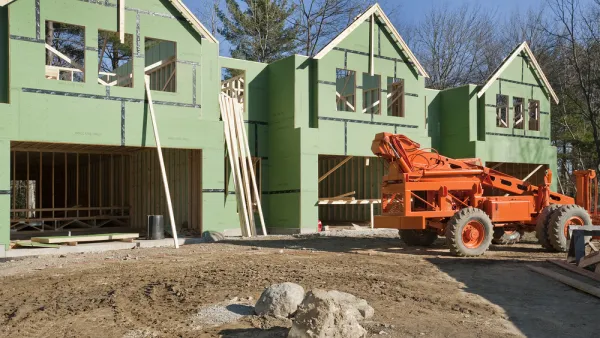The impact of the urban grocery store gap, particularly on low-income communities, has been well documented. The presence of full-service grocery store can raise the economic value of surrounding property, serve as an anchor in commercial districts, provide an important source of jobs, and lower the daily cost of living for residents. In an era of skyrocketing obesity rates, public health research shows a strong correlation between the presence of a grocery store and the consumption of fruits and vegetables.
The impact of the urban grocery store gap, particularly on low-income communities, has been well documented. The presence of full-service grocery store can raise the economic value of surrounding property, serve as an anchor in commercial districts, provide an important source of jobs, and lower the daily cost of living for residents. In an era of skyrocketing obesity rates, public health research shows a strong correlation between the presence of a grocery store and the consumption of fruits and vegetables.
Tesco, the UK-based supermarket and convenience chain – and fourth largest retailer in the world - has announced that it will open 100 to 150 stores in the United States in 2007 and 2008. This bold move by a company virtually unknown in the US has generated lots of buzz in the highly competitive supermarket industry. The proposed stores, at least 20 of which will be in California, will be quite small by supermarket industry standards. Modeled on Tesco's successful "Express" stores, the new stores will be up to 3,000 square feet with an emphasis on fresh produce, wines, and an in-store bakery. The smaller footprint means that these stores will be able to locate in communities without adequate real estate to accommodate conventional supermarkets.
Tesco intends to compete head to head with traditional retailers like Vons, Ralphs, Albertsons, and others – stores with an average footprint of more than 45,000 square feet. The foot print of the typical American grocery store has steadily expanded during the past 15 years as retailers have braced themselves to compete with Wal-Mart. The ever-larger footprint of most grocery retailers has created a spatial mismatch in many cities across the nation, where local communities have struggled to attract and retain food retailers.
The supermarket industry itself has been slow to respond to the significant unmet demand for food retail in urban neighborhoods. While other big box retailers have begun to offer smaller footprint stores designed for urban areas, few US supermarket retailers have developed formats better adapted to dense cities. By contrast, less access to large parcels of land and more restrictive British zoning laws have put pressure on Tesco and other UK retailers to offer smaller store formats. Tesco currently operates four distinct store formats in the UK, ranging from 3,000 to 60,000 square feet. By contrast, Wal-Mart's smallest offering, the Neighborhood Market, weighs in at a sizeable 40,000 square feet. The entry of Tesco's unique format into the US market has the potential to shake things up within the industry.
And what lessons can we Planetizens draw from the Tesco experience? Given the comparative advantages of greenfield development and the ongoing consolidation of our food distribution systems, big box retailers are likely to continue to proliferate at the urban fringe. Instead, we can draw insights from the UK experience, where retailers like Tesco have to compete with a strong base of independent markets in the urban core. The UK's zoning laws are designed to retain and support these independent businesses as viable alternatives to big box retailers.
Fortunately, there are fledgling efforts underway in the US to support independent small-scale grocers as well. In 2006, Governor Schwarzenegger signed the "Healthy Food Purchase Pilot Program," which will provide technical assistance to corner store operators who wish to begin selling fresh fruits and vegetables. In Pennsylvania, The Food Trust's Healthy Corner Store Initiative provides financing and technical assistance to small retailers offering produce and other healthy products. Elsewhere, local governments are targeting resources to revitalize commercial corridors and adopt transportation policies that link housing to neighborhood-scale retail. These projects, and others like them, have the potential to create real community benefits and a true alternative to big box retail. If these innovative, locally-owned businesses are successful, the true competition to Tesco's Express stores could come from the independents.

Analysis: Cybertruck Fatality Rate Far Exceeds That of Ford Pinto
The Tesla Cybertruck was recalled seven times last year.

National Parks Layoffs Will Cause Communities to Lose Billions
Thousands of essential park workers were laid off this week, just before the busy spring break season.

Retro-silient?: America’s First “Eco-burb,” The Woodlands Turns 50
A master-planned community north of Houston offers lessons on green infrastructure and resilient design, but falls short of its founder’s lofty affordability and walkability goals.

Test News Post 1
This is a summary

Analysis: Cybertruck Fatality Rate Far Exceeds That of Ford Pinto
The Tesla Cybertruck was recalled seven times last year.

Test News Headline 46
Test for the image on the front page.
Urban Design for Planners 1: Software Tools
This six-course series explores essential urban design concepts using open source software and equips planners with the tools they need to participate fully in the urban design process.
Planning for Universal Design
Learn the tools for implementing Universal Design in planning regulations.
EMC Planning Group, Inc.
Planetizen
Planetizen
Mpact (formerly Rail~Volution)
Great Falls Development Authority, Inc.
HUDs Office of Policy Development and Research
NYU Wagner Graduate School of Public Service




























